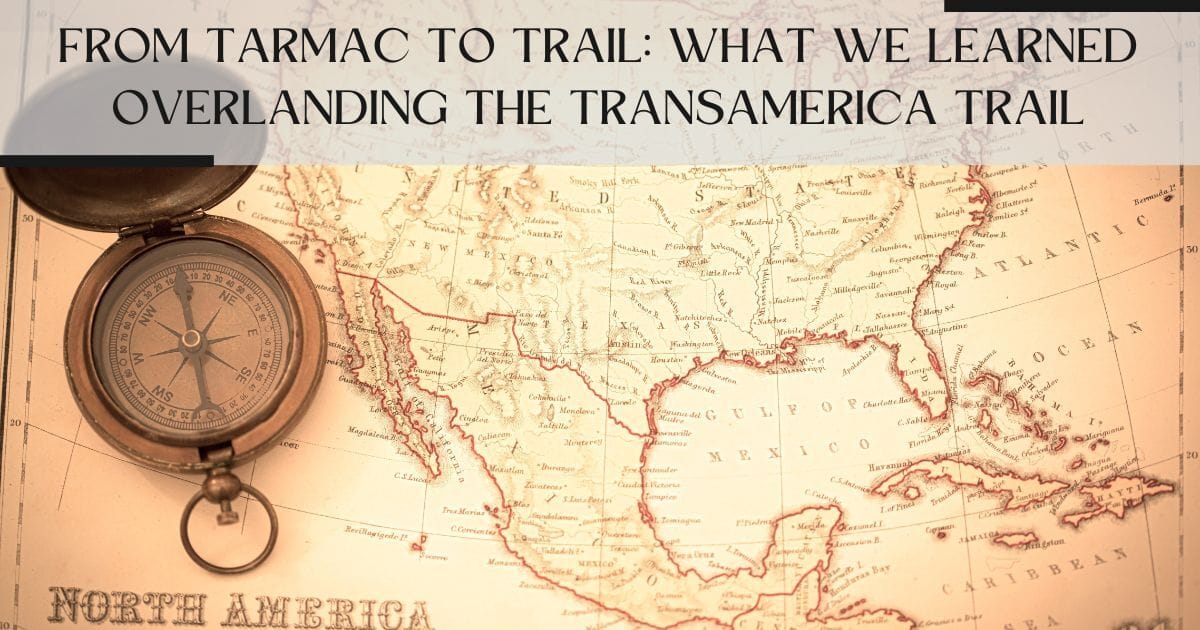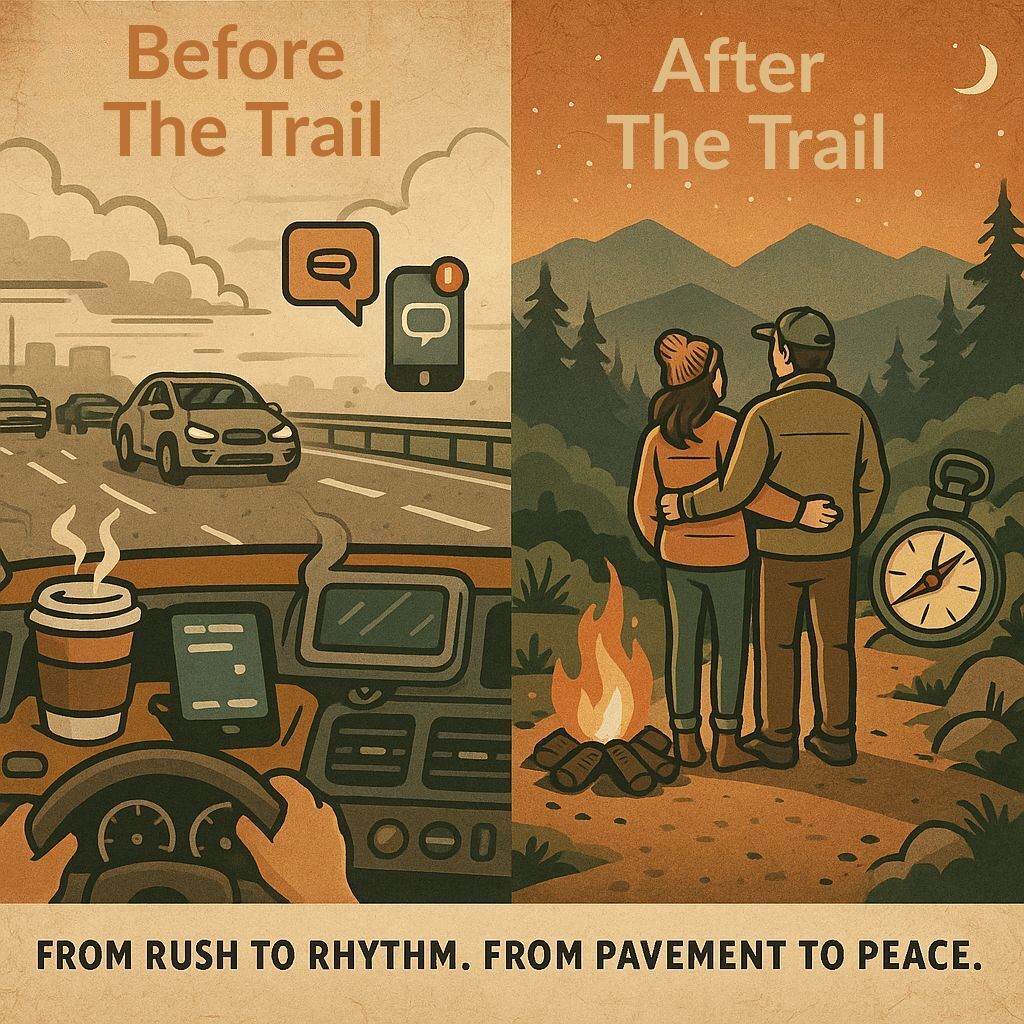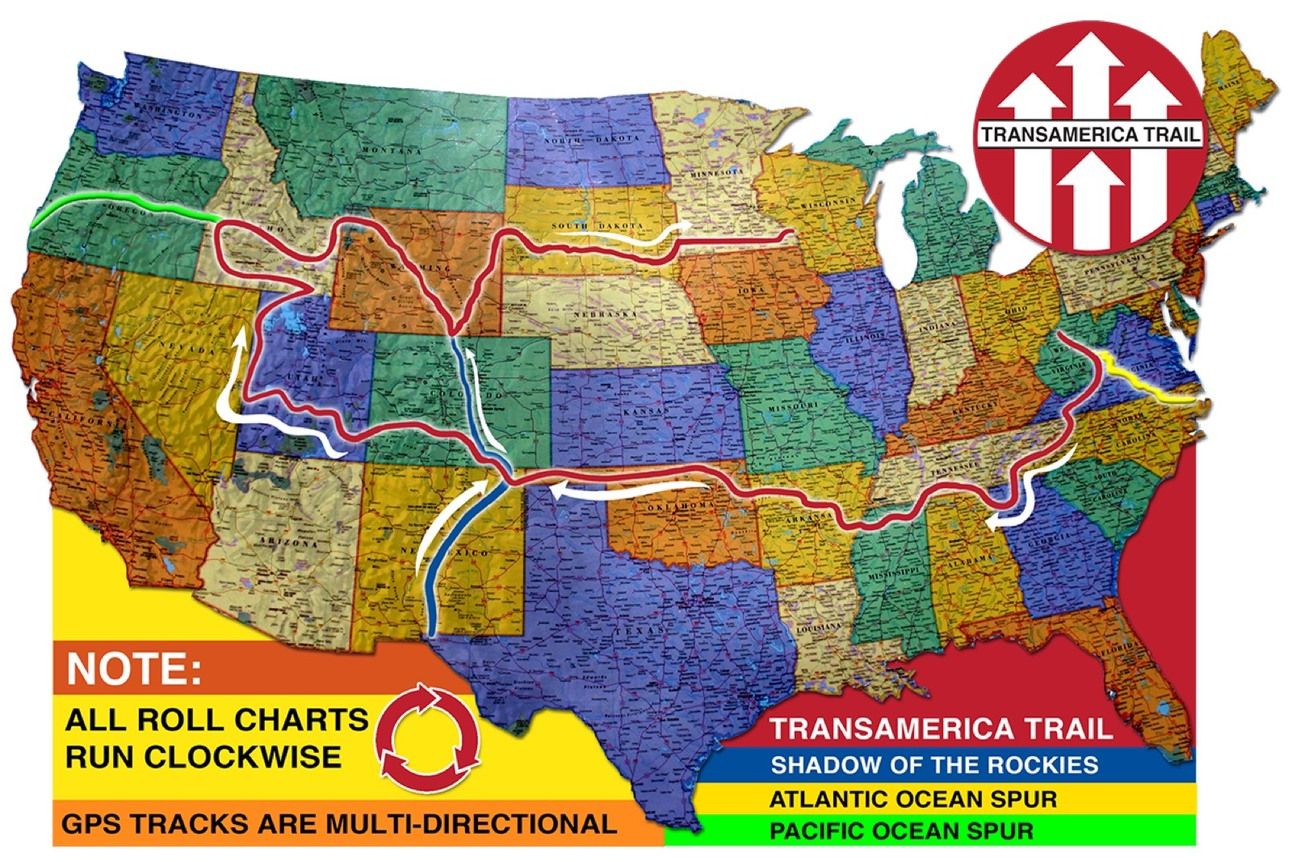- Adventure Wisdom Hub
- Posts
- From Tarmac to Trail: What We Learned Overlanding the Transamerica Trail
From Tarmac to Trail: What We Learned Overlanding the Transamerica Trail
Whether you're dreaming of your own cross-country trip or just looking to get a little lost in the woods this weekend, remember: the trail is always out there. You just have to be willing to leave the pavement behind.

There’s something oddly poetic about watching the pavement disappear beneath your tires, replaced by gravel, dust, and the slow rhythm of backcountry roads. That’s exactly what happened when my wife and I set off to overland the TransAmerica Trail — a little known, mostly off-pavement route stretching coast to coast, from North Carolina to Oregon, stitched together by farmers’ paths, forest service roads, and winding mountain trails.
For 57 days, we traded interstates for logging tracks and roadside diners for freeze dried lunches and campfire dinners. We slept under the stars, crossed state lines without seeing a single freeway, and found ourselves stuck — mentally and literally — more times than we’d like to admit.
Here’s what we learned from crossing America the long, slow, and spectacularly dusty way.

You can drive across the U.S. in less than a week. Or you can take the TAT and realize the journey is the destination. Some days we covered 200 miles. Other days, barely 40. We found beauty in the in-between: a lone moose in a river in Colorado, an old-timer crop dusting his land in Mississippi, a thunderstorm rolling across an Oklahoma wheat field like something out of a Hollywood film.
One day especially drove this point home as we spent 6.5 hours on some of the roughest and steepest roads we’ve ever seen. At the end of that exhausting day, we’d only traveled 25 miles. The trail was treacherous as it precariously climbed across 5 original mountain crossings: paths created more than a century before by gold miners and settlers. Completely frazzled and emotionally spent, the difficult roads brought unexpected views that looked like something out of Lord of the Rings. The imagery of that day will live with us forever. Never before had we seen such raw and rugged beauty. What turned out to be the slowest day of our entire trip also turned out to be our most memorable.
If you're in a rush, overlanding isn’t for you. If you're ready to let the world unfold one dirt road at a time? You're in for something unforgettable.

We spent months building out our Jeep Wrangler — suspension upgrades, rooftop tent, steel bumpers with a winch, onboard air compressor, the works. And yeah, it helped. But we met a family in a 20-year-old Toyota pickup doing just fine. What mattered more? Knowing how to use what we had.
More than once, we were humbled by our own gear — like when our high dollar mattresses leaked air, or when the vent in our back door became a vacuum for dust that filled our rig and coated us from head to toe. Overlanding isn't about having the best gear; it's about being prepared, adaptable, and willing to learn.

Even with GPS, paper maps, and every GPX file imaginable, we still got lost. A lot. We missed turns because we were deeply involved in conversation, other times we got sidetracked by amazing sights that we hadn’t planned to stop and see. Cell service was intermittent throughout the trip making it primarily unreliable. At first, it was frustrating. Later, it became a feature, one that was the source of numerous emotional and ultimately humorous discussions.
We relearned how to read a compass. How to follow the sun. How to ask locals for directions when our route had washed out in Tennessee. We found new navigation apps we’d never heard of and new ways to use the ones we already had. And we learned that being "off course" can often lead to the best discoveries — a hidden waterfall, a forgotten mining town, a diner serving the best peach pie we’d ever had.

We spent more time alone than we ever had before. Days without seeing another soul, nights where the only sound was wind and coyotes. The first week was exhilarating. The second? A little eerie. But by the third, we started to hear ourselves again — beneath the podcast noise, social media static, and news alerts.
The uninterrupted time we were able to spend together strengthened and deepened our bond. Time alone together reminded us of things we’d forgotten about one another. It was a gift, indeed the greatest of gifts we received during this adventure but that is another story for another day.
Solitude, it turns out, isn’t about being alone. It’s about being with yourself, without distraction. The TAT gave us space to recalibrate, and we came out the other side clearer, calmer, and closer to one another in many ways.

One of the greatest myths we’ve bought into is that wildness is gone, paved over by highways and strip malls. The TAT proves otherwise. This country is still vast, raw, and full of backroads that lead to real adventure.
But more than that, it's full of people who care. A man at a gas station in West Virginia helped us find and eliminate an incredibly annoying squeak in our roof rack and refused payment. A mechanic in Colorado helped us find and replace a failing dust cap on our front axle that made sounds like the whole drivetrain was seizing. An old friend reached out inviting us on her radio show to talk about our journey.
We’re fed a lot of cynicism these days. But out there, beyond the tarmac, we found something better: connection, kindness, and a quiet reminder that this country is more than its headlines.


When we reached the Pacific, we thought we’d feel triumphant. Instead, we felt… reflective. The end of the trail wasn’t a finish line — it was a beginning. A new way of seeing, traveling, and living.
Overlanding the TransAmerica Trail didn’t just take us across the country — it changed how we move through it. We came back with less fear, more grit, and a renewed sense of wonder.
Whether you're dreaming of your own cross-country trip or just looking to get a little lost in the woods this weekend, remember: the trail is always out there. You just have to be willing to leave the pavement behind.

About the Author: David, and his wife Tiffany, are authors who write books about camping and overlanding. They teach classes, based on those books, at camping and overlanding events across the country. Tiffany is an award-winning photographer; David is an award-winning videographer. Together, they create content for small businesses that is intended to help them grow through social media. Find them on the web (www.BestLifeAdventureChannel.com) or follow them on YouTube, Facebook, Instagram and Patreon @BestLifeAdventureChannel.
